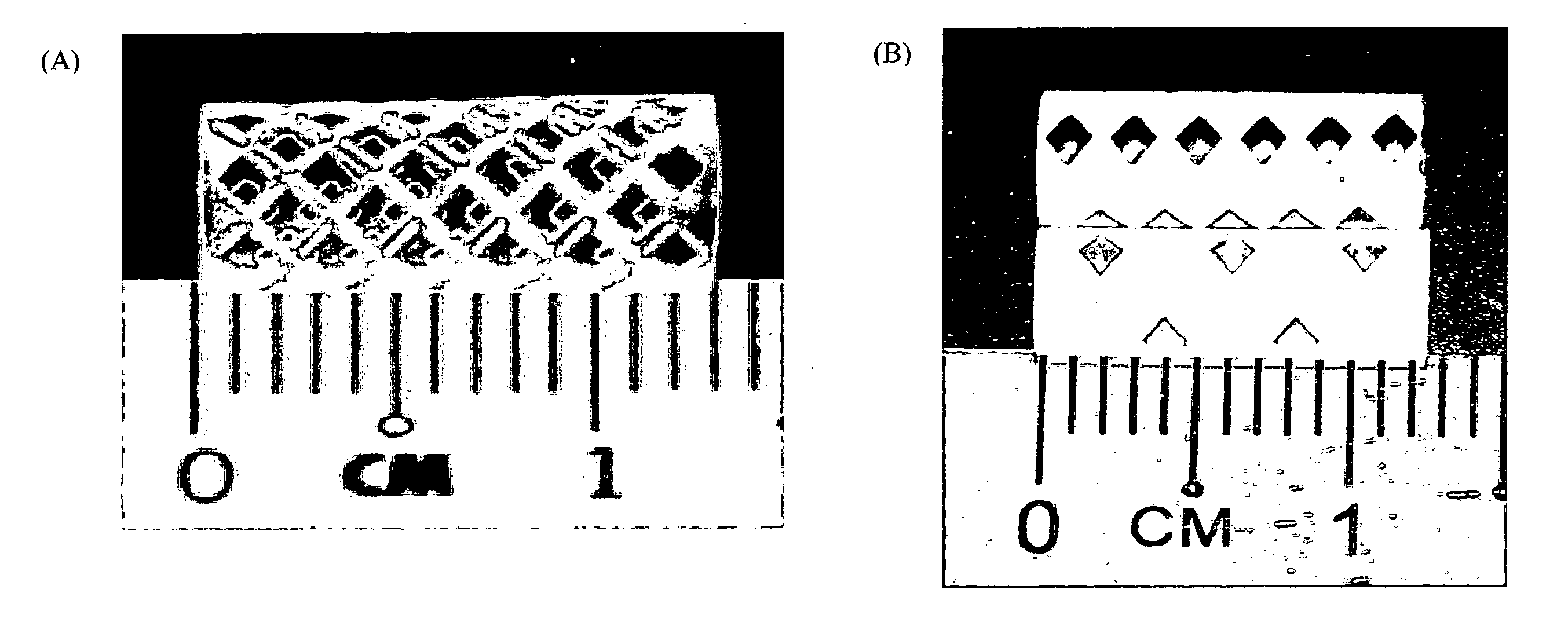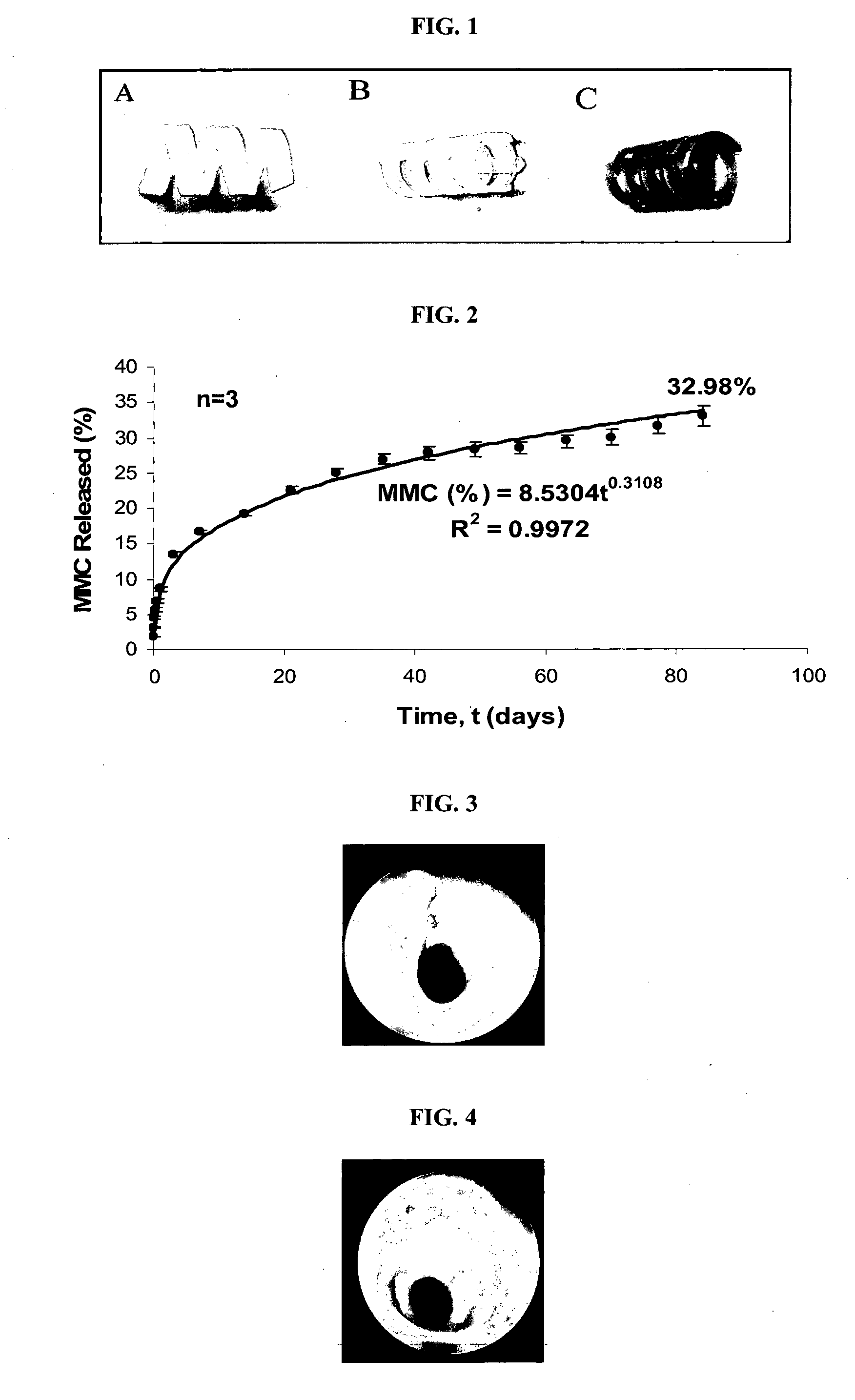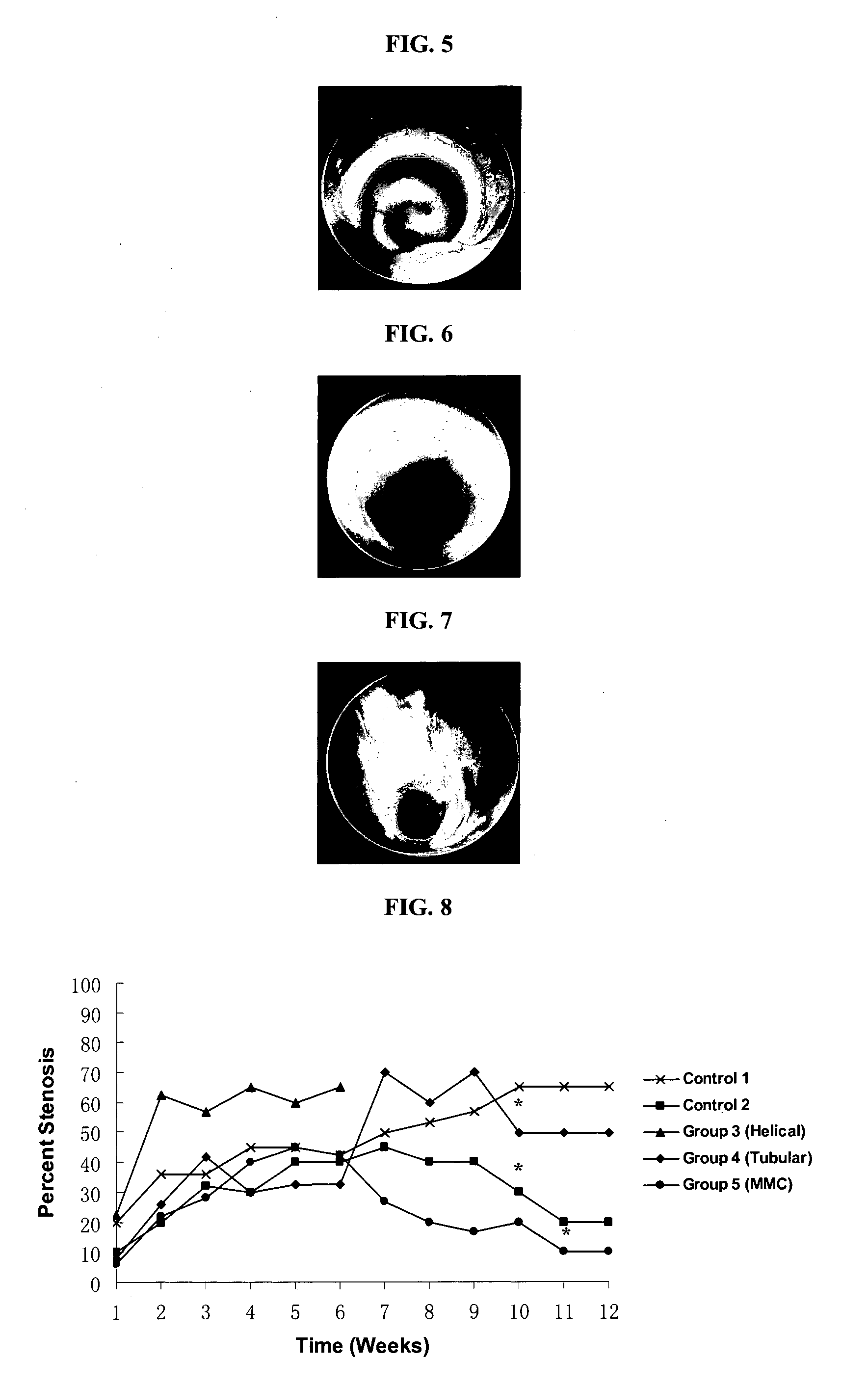Bioabsorbable tracheal stent, and method of manufacturing thereof
- Summary
- Abstract
- Description
- Claims
- Application Information
AI Technical Summary
Benefits of technology
Problems solved by technology
Method used
Image
Examples
example 1
In-Vitro Mitomycin C (MMC) Release Samples and Analysis
[0062]In vitro Mitomycin C (MMC) release studies were performed to simulate MMC release from the drug-loaded tubular stents. Films incorporating MMC were prepared by solution casting. These films (n=3) containing MMC at 0.1 mg / film were immersed in 2 ml of distilled water in glass vials to ensure sink conditions, and placed in a 37° C. incubator, with the medium changed weekly. Drug stability and release were studied using reversed-phase high performance liquid chromatography (HPLC) and measured at a wavelength of 365 nm. After the last time point, extraction of any residual MMC in the films was performed by dissolving all films completely in an organic solvent (tetrahydrofuran) and analyzed by HPLC. Release profiles were normalized based on the total loading determined in this manner.
example 2
Stent Fabrication
[0063]Two stent designs were used in this study: helical and tubular. Both were fabricated based on the bioabsorbable copolymer, poly(L-lactide-co-ε-caprolactone) (PLLA-PCL) 70 / 30, from Purac Biochem BV (Gorinchem, The Netherlands). Glycerol, from Sigma-Aldrich Inc. (MO, USA), was added to PLLA-PCL at 10% by weight to increase water uptake into the copolymer, and reduce degradation time to 6 weeks to 3 months for a tracheal stenosis application. MMC was purchased from Hande Industry and Trade Holdings Limited (Shenzhen-China), and its final dosage was optimized to 0.1 mg per-stent.
[0064]Sizes of stents chosen to be studied were those that could fit a pediatric tracheal airway. Silicone stents used were tubes with 1 mm wall thickness, 6 mm outer diameter (OD) and 10 mm length. All stents fabricated had 0.25 mm wall thickness, 6 mm+0.2 mm OD and 10 mm length.
[0065]Helical-shaped stents were fabricated from PLLA-PCL+10% glycerol strips.
[0066]Tubular-shaped stents had 1...
example 3
[0068]All surgical procedures were performed by the same surgeon in an aseptic manner. 5 groups of 5 New Zealand white rabbits in each group, each weighing 3.5 4.0 kg, were studied. Trachea stenosis was created in all groups using unipolar diathermy. The 5 groups were 1) Control 1 —without stent; 2) Control 2—commercially available silicone tubular-shaped stent; 3) Bioabsorbable helical-shaped stent; 4) Bioabsorbable tubular-shaped stent; and 5) Bioabsorbable tubular-shaped stent with MMC.
PUM
| Property | Measurement | Unit |
|---|---|---|
| Weight | aaaaa | aaaaa |
| Weight ratio | aaaaa | aaaaa |
| Biodegradability | aaaaa | aaaaa |
Abstract
Description
Claims
Application Information
 Login to View More
Login to View More - R&D
- Intellectual Property
- Life Sciences
- Materials
- Tech Scout
- Unparalleled Data Quality
- Higher Quality Content
- 60% Fewer Hallucinations
Browse by: Latest US Patents, China's latest patents, Technical Efficacy Thesaurus, Application Domain, Technology Topic, Popular Technical Reports.
© 2025 PatSnap. All rights reserved.Legal|Privacy policy|Modern Slavery Act Transparency Statement|Sitemap|About US| Contact US: help@patsnap.com



